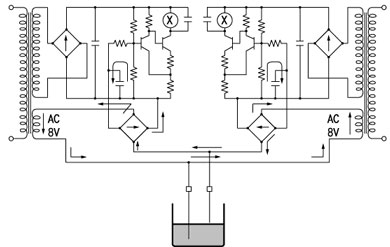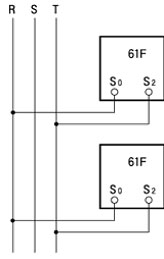Is it possible to connect more than one 61F Floatless Level Controller to the same electrodes?
Electrodes cannot be shared. Do not connect more than one 61F to the same electrode.
If the voltage phases of the electrode circuits' 8-VAC power supplies are opposite, as shown in Figure 1, a closed loop circuit can pass through to two internal circuits (in the direction of the arrows) and the 61F can operate improperly when the power supply is turned ON, regardless of the water level.
Figure 2 shows how the power supplies' phases can be synchronized to prevent a loop circuit, but the 61F internal impedance will drop to approximately 1⁄2 of the correct impedance from the standpoint of the electrodes.
When using two or more 61F, separate the electrodes to prevent mutual interference. Sharing of the common electrode is acceptable.
Figure 1: Example of a Loop Circuit
Figure 2: Synchronizing the Phases
